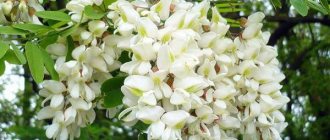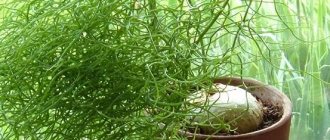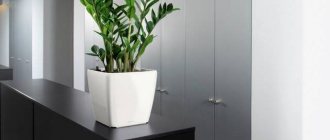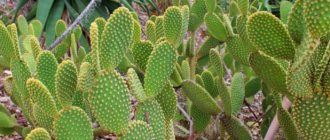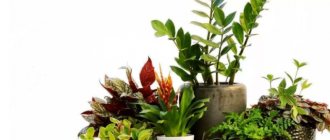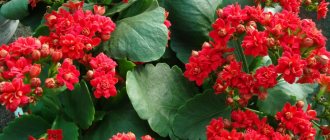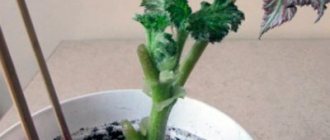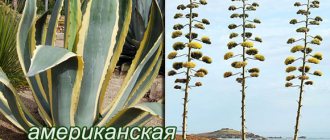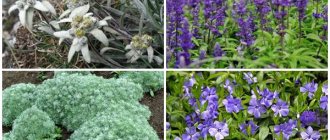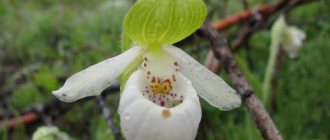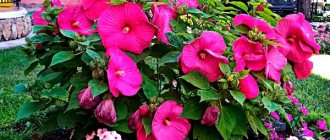Beautiful indoor flowers
Home flowers in the interior should not be the result of impulsive purchases. When planning to purchase them, it is worth thinking through the compositions in advance and taking the choice of copies seriously. In addition, it is worth assessing the compliance of the chosen location with the plant’s habitat conditions and its functional significance.
Most plants will look beautiful only with sufficient lighting, this should be taken into account when purchasing, arrange the flowers so that they receive enough sun or organize additional lighting, which is associated with costs.
For kitchen
Flowerpots in the kitchen interior will allow you to diversify the design and create accents that are pleasing to the eye. Many plants can easily coexist on the windowsill, from the usual violets to exotic ferns.
A feature of the kitchen is temperature changes and high humidity. It is worth selecting plants taking into account these parameters. Such conditions will provide excellent habitat for:
- aloe;
- ficus;
- ivy;
- miniature fruit trees.
When planning your kitchen design, keep in mind that plants should be organized and look neat. They can be placed directly on the table instead of cut ones. Flowers should look healthy and free of pests. Sharp, intoxicating aromas are unacceptable for this room.
For the bedroom
You can use a wide variety of pieces to decorate your bedroom. Plants are easy to place on the floor, window sills, or create a composition on a wall, bedside table, or coffee table.
Since the bedroom is a place for relaxation, where we spend a lot of time, it is worth avoiding species whose representatives are capable of releasing toxic substances. This will lead to constant headaches and malaise. You should not choose flowers with a rich aroma. Also, experts do not recommend using lilies, which actively absorb oxygen, to decorate the bedroom. The ideal option for the bedroom would be:
- spathiphyllum;
- violet;
- myrtle;
- Kalanchoe.
When choosing an option for the bedroom, you do not have to worry about the opinions of guests, since they rarely visit this room. You can create a composition to your taste and enjoy it.
For dark rooms
If the apartment is located on the north side, its windows are covered with tree crowns, choose plants that can easily tolerate shade. Decorative foliage options tolerate darkening perfectly and will decorate a room shrouded in twilight.
It is easy to place such a composition in any convenient place. Can be placed on a windowsill, placed on a wall or on the floor. Experts note shade-loving plants that have become popular:
- philodendron;
- fern;
- scindapsus;
- aglaonema.
When choosing a shade-loving specimen, keep in mind that it can be located on a windowsill if it is not exposed to direct rays of the sun. Depending on the lighting, the green pet can be placed at a distance of 3 to 9 meters from the window. A standard apartment can provide maximum distance from bright light by placing the plant at the end of the hallway or bathroom.
For the bathroom
Taking water treatments surrounded by living plants is doubly pleasant. Specimens that prefer darkness and high humidity will get along well here. If there is no window in the bathroom, you will have to periodically take the plants out into the light and add additional lighting. The following plants will be comfortable in the bathroom:
- tropical species;
- fern;
- ficus;
- chlorophytum.
In the living room
Flowers in the living room will be an excellent solution when it is quite free and not overloaded with various furniture. Having opted for large specimens, such as dracaena, yucca, it is easy to optically further expand the space.
By choosing hanging plants, small perennials, as well as climbing and weaving options for the living room, you can create a comfortable, cozy atmosphere in the room. When arranging the composition, take into account the characteristics of the plants, moving the light-loving ones closer to the light source.
In the hall
Species that are able to develop even with a lack of light will be comfortable here. Plants should have strong leaves, insensitive to constant touching, lush bushes
It is important that the pots in which the flowers are placed are low and heavy, resistant to tipping over
Ficus, fern, Hederes ivy, and cissus will be luxurious decorations for the hallway. However, even such shade-tolerant plants need to be periodically moved to a sunny place. Otherwise, they will lose their decorative effect and die. An alternative option is to use artificial greenery.
Features of shade-loving plants
The decorative properties of shade-tolerant indoor plants are fully manifested if:
- flowers are in partial shade or shade for half the day;
- Development is not inhibited by lighting intensity: growth does not slow down, the color of the leaf blades does not fade;
- sunlight does not cause leaf burns;
- the soil and air are sufficiently moistened;
- adhere to the temperature regime;
- Shade-loving plants are rarely replanted.
A variety of shade-loving crops allow you to create stylish flower arrangements that will decorate your premises.
Dracaena: light-loving or shade-tolerant
The tree-like culture is characterized by contrasting coloring of narrow elongated leaf blades. The variety determines the height of the dracaena - from 0.7 to 3 m. To preserve its decorative qualities, sufficient, but not extremely bright, illumination plus moderate moisture will be required.
Dracaena in the interior
Ficus: light-loving or shade-loving plant
A popular crop among flower growers, belonging to the Mulberry family, is bred with small or large foliage. Species with dark green leaves develop well in partial shade, while variegated ones like the sun. They are light-loving and heat-loving, and love high humidity. Drafts and supercooled soil are dangerous for ficus.
Violets: light-loving or shade-loving
The flower needs plenty of light, but does not tolerate direct sunlight well - burn spots form on the plates, the color becomes pale, and there is no flowering. A location in light partial shade or diffused light is just right for a violet.
The shade-tolerant plant is afraid of the heat of the sun; it feels great in the summer 3-4 m from the window. In winter, with short daylight hours, it is advisable to move Saintpaulia closer to sunlight. The culture is valued for its rich color palette. Dried flowers are immediately picked off and the temperature is maintained at least +15°C.
Kalanchoe: light-loving or shade-loving
Housewives who prefer flowering crops, but forget about watering them, will definitely choose Kalanchoe. The plant can go without water for a month, but this will negatively affect flowering.
Kalanchoe with an unusual color
Warm days in summer are preferable for the flower. It is placed on the southern windowsill, slightly shaded.
Indoor flowers that love shade and are easy to care for will fit into the interior of any home. The design provides for their location in the back of the room and the creation of green spots in the apartment. They will provide a feeling of peace and relaxation and will tolerate limited sunlight all year round. Which plants to choose depends only on the preferences of the housewife.
Names of unpretentious shade-loving plants with descriptions
Usually, growing shade-loving flowers is accompanied by a number of additional actions, since most of these plants are capricious. But there are also unpretentious flowers, for example, chlorophytum, anthurium, spathiphyllum, pelargonium.
Chlorophytum
Chlorophytum is a herbaceous perennial. Chlorophytum is distinguished by rich species diversity. The most famous types of flowers are:
- Crested;
- Curly (Bonnie);
- Cape;
- Orange (Winged, Orchidstar);
- Laxum.
Chlorophytum is distinguished by long drooping stems. A bunch of leaves with aerial roots forms at the tip of the stem. Thanks to such stems, the flower is able to take root in a neighboring pot and, over time, displace its occupant.
The leaves are lanceolate, collected in a basal rosette. The surface is glossy or matte. In some species it is rough to the touch. The color of the leaf blade can be expressed as a grassy shade of green, bright or dark green. Some types have longitudinal white inserts.
Chlorophytum blooms with small white flowers. Flower baskets are collected in panicle-shaped inflorescences.
Spathiphyllum
Spathiphyllum is an evergreen perennial that belongs to the Araceae family. People call the flower “female happiness.” The following types of plants are used in indoor floriculture:
- Wallis;
- Domino;
- Sensation;
- Abundantly flowering;
- Mauna Loa;
- Heliconifolia.
Spathiphyllum is characterized by a very small root system and the absence of a stem. A rosette of leaves grows directly from the soil.
Leaf blades can have either an oval or lanceolate shape. The central vein and thin transverse veins are clearly visible on the surface. The plate is attached to an elongated petiole. Depending on the type, the leaves can have a matte or glossy surface, a solid green color or a green color with whitish strokes.
Spathiphyllum is prized for its beautiful flowers. The inflorescence consists of a spadix and a spathe. It is placed on a long peduncle. The color of the bedspread is always snow-white. And the cob can have a milky, yellow or pink color.
Anthurium
Anthurium is an evergreen perennial from the Araceae family. Known as “male happiness”. The flower has a wide variety of species. The following types of plants are considered the most popular:
- Andre;
- Baker;
- Majestic;
- Hooker;
- Climbing;
- Multi-dissected;
- Crystal;
- Scherzer.
Anthurium has a thick stem. As a rule, the stems of the plant are shortened.
Due to the wide variety of species, anthurium leaves can be presented in various forms. Leaf blades are always attached to petioles with a geniculum. The surface of the plates can be matte or glossy. The structure is from leathery to fragile papery.
An anthurium flower is a spadix wrapped in a blanket. Unlike spathiphyllum, the spadix can have a variety of shapes, including spiral-shaped (Anthurium Andre) and a leathery cover. The color of the flower is varied.
Pelargonium
Pelargonium is a perennial herbaceous plant, succulent or shrub of the Geranium family. The following types of flowers are used in indoor floriculture:
- Fragrant;
- Capitate;
- Fragrant;
- Zonal;
- Klobuchkovaya;
- Large-flowered;
- Curly;
- Staining;
- Downy-leaved;
- Pink;
- Angular;
- Quadrangular;
- Thyroid.
Pelargonium is characterized by strong branching. The stems can grow straight or creep. The leaf blades are palmate or palmately dissected. Flowers are collected in umbrella-shaped inflorescences. Thanks to the abundance of flower baskets, the impression of terry is created. The color of the petals is varied.
Palm trees and large trees for home growing in partial shade
Such plants will decorate a spacious room, office or winter garden.
Dracaena
A tree-like plant with contrasting colors of narrow long leaves. Depending on the type, dracaena grows from 70 cm to 3 m in height. To preserve the decorative effect, sufficient, but not bright, lighting and moderate moisture are necessary.
One of the types of dracaena
Cordilina
Height from 0.5 to 2 meters . Often grown in tubs. It is distinguished not only by its varied color, but also by the shape of its leaves: they can be very narrow, long, lanceolate, or wide, round. Cordyline is often confused with dracaena.
Cordilina on the windowsill on the north side
Monstera
Cannot tolerate bright lighting at all . He loves “water procedures” - wiping and polishing leaves, spraying, abundant watering in summer and moderate watering in winter.
Monstera
Palm
This name combines various species that have one feature: a single growth point at the top of the stem. Most palms grown indoors like partial shade , abundant watering in summer and less intensive watering in winter, and moist air.
Plants that tolerate shade and require additional lighting
- Aglaonema (Aglaonema) is a relative of Dieffenbachia and therefore somewhat similar to it, differing only in narrower leaves, the size of Aglaonema is much smaller than Dieffenbachia, and the plant itself has the shape of a bush. Requires additional lighting in winter
- Alocasia (Alocasia) is a beautiful indoor plant with large arrow-oval (or heart-shaped) leaves, of which there are no more than 6-7. In winter it requires additional lighting.
- Anthurium - grown as a flowering and decorative foliage plant, as well as for cutting. With a lack of light, the leaves are small and the flowers lose color.
- Asplenium (Asplenium) - in culture it is represented by several species, outwardly very different from each other. Cultivated in humid and warm greenhouses and rooms.
- Deciduous Begonias - Begonias do not like direct sunlight, preferring partial shade. If the begonia stands directly on the window, it receives enough light for development, but it can be burned by direct sunlight, so it should be shaded from direct sun. Some begonias also feel good in low light conditions, such as happens, for example, on north-facing windows. When determining a place for begonias in a room, you should take into account the individual need for lighting of a particular species or variety. Decorative leaf begonias are day neutral plants. They grow and bloom well in both short and long daylight conditions. The most shade-tolerant varieties: B. x Bow-arriola, B. hogweed, B. grape-leaved, B. diadema, B. yellow, various. Painted-leaved, B. red-leaved, B. variegated, or multi-colored, B. Richardson, B. Fist, B. fuchsia, B. Schmidt, B. silver-spotted - requires year-round shade;
- Dieffenbachia - requires additional lighting in winter;
- Dracaena - requires intense light for good growth and development. Variegated forms require more lighting than forms with green leaves. If there is enough light in summer, then in winter dracaenas should be moved closer to the window, since in winter there is usually not enough light. Dracaena grows well in artificial light.
- Ctenanthe - partial shade; in bright light and in too dark a place, the color of the leaves is lost. Direct sunlight should be avoided. In winter, plants should not be placed close to window panes;
- Muehlenbeckia is a light-loving plant, but the hot afternoon sun can kill it;
- Nephrolepis - can grow in fairly dark places, but the bush will be thin and ugly;
- Ostyanka, or Oplismenus (Oplismenus) - Oplismenus is a rather shade-tolerant plant, but it is better to keep it in diffused light;
- Snakebeard, or Ophiopogon, is unpretentious to the light regime, feels great both in intense sunlight and in a more shaded place;
- Ivy, or Hedera (Hedera) - ivy does not tolerate direct sunlight, but (especially variegated forms) prefers a well-lit place, and does not like changes in location in relation to the light source. Green ivy varieties can be classified as shade-tolerant, but it is still advisable to provide it with a bright place. In winter, a brighter location is needed;
- Fittonia - partial shade; in bright light and in too dark a place, the color of the leaves fades. Should be protected from direct sunlight. In winter, plants should not be placed close to window glass.
Dracaena in the shadow of a room. kaydemcc
Properties of north windows
The most important characteristic of a window is illumination. It can be measured with a lux meter. The second important feature is temperature.
Window illumination. If it is not possible to measure the illumination, it can be estimated approximately. Look at the window of your apartment and answer the following questions: Is it large or small in terms of glass area? Are there double-glazed windows or old double-glazed windows that are difficult to open and the glass is rarely washed? Are there trees growing outside the window, are there buildings nearby? Where do you live, in the south or north, in Murmansk or Tashkent?
If the northern window is large, in the southern regions, where the intensity of sunlight is high, it has high-quality double-glazed windows, then such a window is perfect for indoor plants. If the window is small, on the ground floor, there is a tree growing in front of the window - only the hardiest plants can be placed here, chlorophytum or sansevieria, for example.
Temperature . The temperature on the window can differ significantly from the temperature in the room. This characteristic is more important for southern windows - indoor flowers on them in the summer simply overheat, cook, and die as a result. It may be a little colder on the north window in winter than in the room - cold air penetrates through the cracks, and the sun does not heat the window sill. But in summer the temperature is stable and this is just great for plants.
Main types of shade-loving plants
When purchasing live plants, the question arises, which flowers are best kept in an apartment with little sunlight. For convenience, we will divide “shade plants” into categories. Sciophytes are usually divided into four groups:
- decorative deciduous;
- large-sized and palm;
- blooming;
- curly.
Let's look at each of the four groups in more detail.
Decorative foliage
These plants most often do not bloom or delight others with a completely inconspicuous peduncle, but their distinctive feature is bright, large, sometimes carved leaves and with various color combinations. These include: Sansevieria, Fern, Ficus, Schefflera, Aspidistra, Aucuba japonica, Epipremnum Pinnate, Palisota, Alocasia, Fittonia, Maranta, Polygonum crescent, Aglaonema Changeable, Crassula.
Fern in a bright living room with large windows
Tall ficus in a tub in front of the bedroom window
Tricolor arrowroot with chic leaves on the kitchen windowsill
Large plants
Large-sized and palm species have quite voluminous dimensions (height, width), sometimes reaching three meters in size. Here are some of them: Dracaena, Monstera, Palma, Cordyline, Fatshedera, Rapis, Hamedorea.
A rather unpretentious dracaena has been successfully grown at home since time immemorial.
It is recommended to place rapis near the western or eastern windows of the apartment
Cordyline Augusta looks very beautiful with leaves that shimmer with pink, scarlet and dark green flowers.
Flowering plants
Flowering specimens can be perfectly located and bloom in the northwestern apartment zone. These include the following varieties: Saintpaulia Uzambara, Vriesia, Clivia, Anthurium, Miltonia, Streptocarpus, Spathiphyllum, Begonia.
Saintpaulia (violet) is one of the most common plants that bloom well indoors
Indoor begonia loves moist air and requires frequent irrigation.
Clivia will bloom well if placed on a south-facing windowsill
For a room with windows facing north, you can choose spathiphyllum, which blooms even in low light conditions
Loaches
Curly specimens with which you can create original decorative elements. For example, Philodendron climbing, Hedera, Tradescantia, Tetrastigma, Cissus.
Luxurious phytowall made of climbing plants
Shade-loving plants for an apartment help decorate its interior and make the air in it much cleaner. But in addition to the aesthetic orientation of heliophobes, their healing side is also taken into account. What plants are useful to keep in an apartment: Philodendron, Ivy, Begonia, Ficus - they clean the air well of carbon dioxide and microbes, and Sansevieria will add a fragrant trail of vanilla.
It is contraindicated to place ferns in the bedroom, as they absorb oxygen and release carbon dioxide. This happens especially actively at night.
Plants that grow well in the shade
Not only indoor flowers do without a lot of light. Vegetable crops that are cultivated for food also thrive in the same conditions.
Some of them are suitable for growing on kitchen window sills and balconies facing north. This experiment will survive:
- lettuce leaves;
- spinach;
- dill;
- parsley;
- celery;
- tomatoes of “polar” varieties;
- beans.
A vegetable garden on the windowsill will not take much time and effort. Even if it is located in the shade. But the benefits of such a “bed” are obvious.
Blooming
Among the shade-loving plants there are many beautiful flowering ones. So you have the opportunity to decorate both northern and foliage-shaded windows with luxurious flowers. It is only necessary to create optimal conditions for plants for lush flowering and active growth.
Spathiphyllum
Spathiphyllum is a beautiful, shade-tolerant indoor flower loved by many gardeners. It feels great on a north-facing window, where its leaves acquire a rich green hue and an elongated shape. Likes frequent spraying and a shower once a month.
Gardenia
Gardenia is a real find for lovers of flowering indoor plants. With good humidity and comfortable temperature (from +16 to 24ºC), this beauty will delight you with its luxurious flowers. Just don’t forget to remove wilted buds in a timely manner.
Saintpaulia
Saintpaulia (Usambara violet) is one of the most common flowering indoor herbaceous plants. It develops well and blooms beautifully in partial shade, with sufficient humidity and comfortable temperatures (from +20 to +24°C).
Vriesia
Vriesia is an unusually beautiful indoor flower, memorable for its bright arrow. However, when growing it, you need to monitor the air temperature (not lower than +18 and not higher than +27 ° C) and the presence of water in its outlet.
Anthurium
Anthurium is a rather capricious, but very beautiful flower, many types of which are intended only for heated greenhouses. When working with the plant, you need to be as careful as possible, as it contains substances that irritate the mucous membrane.
Begonia
Begonia is one of the most beautiful shade-loving plants, whose beautiful large bright flowers decorate any interior in summer and winter. There are about 2000 species of decorative deciduous and decorative flowering begonias. And they all prefer partial shade and moderate watering.
Clivia
Shade-loving clivia pleases gardeners with unusual umbrella-shaped inflorescences located on high peduncles. However, for abundant flowering it needs good watering, light partial shade and fertile soil.
Calathea Crocata
This representative of the arrowroot family is grown for its beautiful leaves of unusual colors: speckled, dashed, dark and light green. Calathea Crocata does not tolerate temperature fluctuations and dry air. Grows well in a closed flower window.
Miltonia
For its lovely flowers, wide open and pansy-like, the miltonia orchid is called “pansy”. Loves partial shade and good humidity. Afraid of drafts. A sign of the correct location of the plant is the pinkish tint of its leaves.
Streptocarpus
Streptocarpus, with its delicate, bell-like flowers, is a real boon for gardeners. It is unpretentious in care, tolerates partial shade, blooms magnificently and for a long time (up to six months) and is easily propagated by any of its parts.
Azalea
Azalea (rhododendron) is rightfully recognized as one of the most beautiful and vibrant flowering indoor plants. In conditions of high air humidity, with regular spraying and observing the temperature regime (from +12 to +20 °C), it will delight you with a luxurious cap of amazing flowers in the winter cold.
Angrekum
Angrecum, like all orchids, is a very delicate and whimsical tropical flower. But it grows well with plenty of moisture and regular spraying with soft, warm water in light partial shade or with sufficient artificial light.
Fern (nephrolepis) – a witness to the era of dinosaurs
A young fern does not take up much space, but then it grows quickly and can crowd out its neighbors, so it is better to place it on a wide windowsill or not far from a window. The plant will tolerate a lack of light well, but only if you provide the fern with light soil and a temperature of at least 15°C. Nephrolepis also suffers greatly in dry rooms, so spray it several times a week and water it regularly.
Fern does not like polluted air and damp, waterlogged soil.
Epipremnum Epipremnum
One of the best indoor vines, Epipremnum, formerly known as scindapsus, exhibits unprecedented draping abilities and is actively used in eco-design, in particular, to create green walls. Epipremnum, reaching a length of 3 meters, is truly capable of growing at an amazing speed and filling the free space. But the talents of the climbing plant are not limited to this. Both in a pot, provided a support is installed, and “in the wild,” this indoor plant is capable of producing shoots up to 6 m long.
Large, oval leaves with a heart-shaped base and a pointed tip can grow up to half a meter in mature plants. Among the epipremnums there are both vines with a classic rich light green color, and variegated specimens with white or yellowish patterns that look like splashes of paint. Epipremnum pinnatum and golden epipremnum (Epipremnum aureum) are particularly shade-tolerant.
Epipremnum pinnatum 'Neon'. Maja Dumat
Despite its impressive foliage, Epipremnum boasts an excellent ability to tolerate almost any growing conditions. When kept at room temperatures and protected from excessive cold, the plant can adapt to any light from full sun to partial shade to shade. And even though in the shade the variegated varietal specimens almost completely lose the typical spots on their leaves, this does not make the epipremnum any less beautiful and densely leafy. Caring for this plant is quite simple, but it requires regular watering and fertilizing.
Ficus
The ficus is native to Southeast Asia, the islands of Java and Ceylon. Ficus is an evergreen or deciduous tree. The flower needs proper care. Usually it is placed in a room with dim lighting, since with insufficient lighting its internodes lengthen and leaves fall off. Ficus is sensitive to temperature changes and cold winds. It does not require regular moderate watering and frequent spraying.
Beautiful indoor flowers
Flowers in the interior of an apartment should not appear as a result of spontaneous purchases. Before purchasing a plant, you need to think about where it will stand and what function it will perform. Most flowers are demanding of light, and this should be taken into account when choosing a location. There are also those that can grow under different conditions, and even in the darkest corners. To better decorate your apartment, you can call a specialist who will select the best flowers for you, taking into account the characteristics of all living spaces.
For kitchen
Potted flowers in the interior of an apartment, including the kitchen, are a highlight, a bright accent, pleasing to the eyes. Different types of plants can coexist in this room, from violets to moisture-loving ferns. The main condition is not to place them next to the stove. Since there are constant temperature changes and high humidity in the kitchen, it is worth choosing those flowers that tolerate these features well. These can be small, compact, heat-loving plants, for example:
- pike tail;
- ornamental fruit plants;
- aloe;
- ivy;
- ficus;
- chlorophytum;
- asparagus.
For the bedroom
In the bedroom you can use outdoor flowers, small potted ones, and various compositions placed on the bedside table or coffee table. If the window sill is wide, large, tall plants will look good; if it is narrow, small, delicate plants will look good. It is not advisable to place a lot of flowers, especially those with a strong aroma. Ferns and lilies that absorb oxygen are not recommended. Ideal flowers for the bedroom:
- Kalanchoe;
- aloe;
- spathiphyllum;
- myrtle;
- violet.
For dark rooms
If there are places in the apartment that are hard to reach for the sun, use shade-loving indoor plants for the interior. They do not suffer due to lack of light; they belong to the decorative deciduous species. Pots can be placed on the floor, hung on the wall, or placed on stands or shelves along the walls. Popular shade-tolerant plants:
- aglaonema;
- aspidistra;
- fern;
- asplenium;
- philodendrons;
- scindapsus.
For the bathroom
Here you can put indoor flowers that love warmth, darkness, and high humidity. It’s great if there is a window, but if there is none, it is recommended to install a fluorescent lamp or phytolamp. Another option is to regularly expose the plants to the sun. In the bathroom you will feel comfortable:
- tropical plants;
- ficus;
- ferns;
- calathea;
- hoya;
- Decembrists;
- chlorophytums;
- aglaonema.
In the living room
When talking about colors in the interior of an apartment, one cannot help but think of the living room. If it is spacious and not overloaded with furniture, place large plants with wide leaves, such as yucca and dracaena. Ampelous, small perennial or climbing, weaving plants will help to visually increase the space. Place light-loving flowers near the window, and shade-loving ones a little further away. The interior will be decorated with hanging baskets, glass vases, and aquarium balls with a variety of plants.
In the hall
Unpretentious plants that get along with a lack of light are suitable. They should have strong leaves that can withstand accidental touches, lush bushes
It is important that the flowers are in heavy (low) pots that are resistant to tipping. Cissus, Hedera ivy, ferns, and ficus grow well in the hallway
Any of these plants must be brought into the light from time to time, otherwise they may wither. Another option is to use artificial flowers in pots for your design.
Fans of the shadow and their talents
Shade-loving crops today can easily be compared in popularity with the most spectacular flowering species and exotics. Unlike the latter, they do not require strict selection of growing conditions and, as a rule, adapt well to conditions in the depths of the room, receiving several times less intense lighting compared to classical indoor crops. Such plants allow you to actively use green accents in the interior.
In complete shade, without access to light, not a single plant, even the hardiest one, will be able to grow. But the requirements for much lower light intensity and the ability to grow crops under artificial lighting with the same success as on window sills allow us to identify a group of truly universal species that can be displayed anywhere you like. If light-loving crops need a light intensity of 10,000 lux, then shade-tolerant crops can tolerate an indicator of 500 to 1000 lux.
You can always measure a specific level of illumination using lux meters or photo exposure meters, but there are simpler methods. It should be taken into account that the maximum allowable distance from windows, even for shade-loving indoor plants, is 2 m from the north and 3 m from window sills of other orientations. Thanks to their ability to adapt to such conditions, shade-loving plants make it possible to decorate study rooms, sleeping corners, bathrooms, other areas and living room relaxation spaces with living plants.
Despite their irreplaceable functionality, versatility and unpretentiousness, shade-loving plants are perceived by many as the most boring group of indoor crops, although they are characterized by the greatest variety of textures. The unique shades of green, which are characteristic of all shade-tolerant herbaceous crops, are manifested even in the fact that a change in location of just a few tens of centimeters can change the intensity of the patterns that appear on the leaves or the shade of color of the leaf blades.
Plants in the back of the room. Arpad Nagy-Bagoly
To landscape the interior and decorate the depths of rooms, you can use shade-loving and shade-tolerant plants. Despite the conditional similarity in terms of the ability to adapt to lower lighting, these plants are not at all the same. Shade-loving plants cannot grow in illuminated locations and naturally prefer secluded lighting. But shade-tolerant crops are real indoor all-rounders that feel equally good in the shade, in partial shade, and in brighter light.
Although even crops with a common origin can exhibit very different light requirements, shade-tolerant plants are most often found among tropical and subtropical plants that are accustomed to making do with minimal light due to the vigorous growth of trees and vines in their native range.
Information is not always provided that plants are able to adapt even to deep shade. A guide can be a reminder that plants feel comfortable on northern windows or can be used for completely artificial lighting. Plants that require a long period of rest in the shade cannot be classified as shade-loving, since at the peak of their decorative value they must be exposed to at least diffused lighting.
Let's take a closer look at some of the best shade-tolerant plants:
Decembrist
It is an epiphytic zygocactus that grows naturally on larger plants in the forests of South and Central America. It is also called “Christmas tree”, “varvarin color”, “Schlumbegra cactus”. It differs from other indoor plants in its flowering period, which begins in December. Thanks to this phenomenon, the flower received its most common name. Decembrist blooms with long tubular flowers of white, pink or red, located at the ends of the shoots. Each flower has long, hanging stamens. The plant is ideal for keeping in a semi-dark room. It is placed on northern windows. The plant does not require watering and does not need spraying.
Caring for shade-loving plants
If you have a corner in your apartment into which critically little light penetrates, and you want to enliven it with a flower, choose from the most shade-tolerant Maranthaceae or Araceae. Features of caring for them include:
1. Placement in shade or partial shade, away from sunlight. Some flowers may die if exposed to direct sunlight.
They can be placed on cabinets, high shelves, and in corners. But still, like any plants, shade-tolerant flowers need ultraviolet light, so to check if there is enough light, conduct a simple experiment. Where you plan to place the flower, try reading a book during the day. It turns out? So the place is suitable.
These flowers do not even require additional lighting.
2. Stray light may enter. But only in the morning or at sunset.
3. In spring and summer, be sure to provide additional shading in the morning, since at this time even diffused light can leave burns on the leaves of some shade-loving flowers.
4. Do not flood the flowers, since there is no sun - there is no additional drying factor. Excess water on the soil surface can lead to disease and insect infestation.
5. The soil must be fertile, because a flower located in the shade receives the main amount of nutrients from the ground.
Of course, flowering plants in shade or partial shade will not grow or will get sick, and they certainly will not bloom. Therefore, almost all shade-loving flowers belong to the group of decorative deciduous flowers.
Shade-loving plants include: Maranta, Aglaonema, Aspidistra, Aucuba, Palisota and Pellionia (very rare plants).
Read the second part of the article - Shade-tolerant indoor plants
Shade-tolerant indoor plants - care Tillandsia: care at home
After this article they usually read
Add a comment
